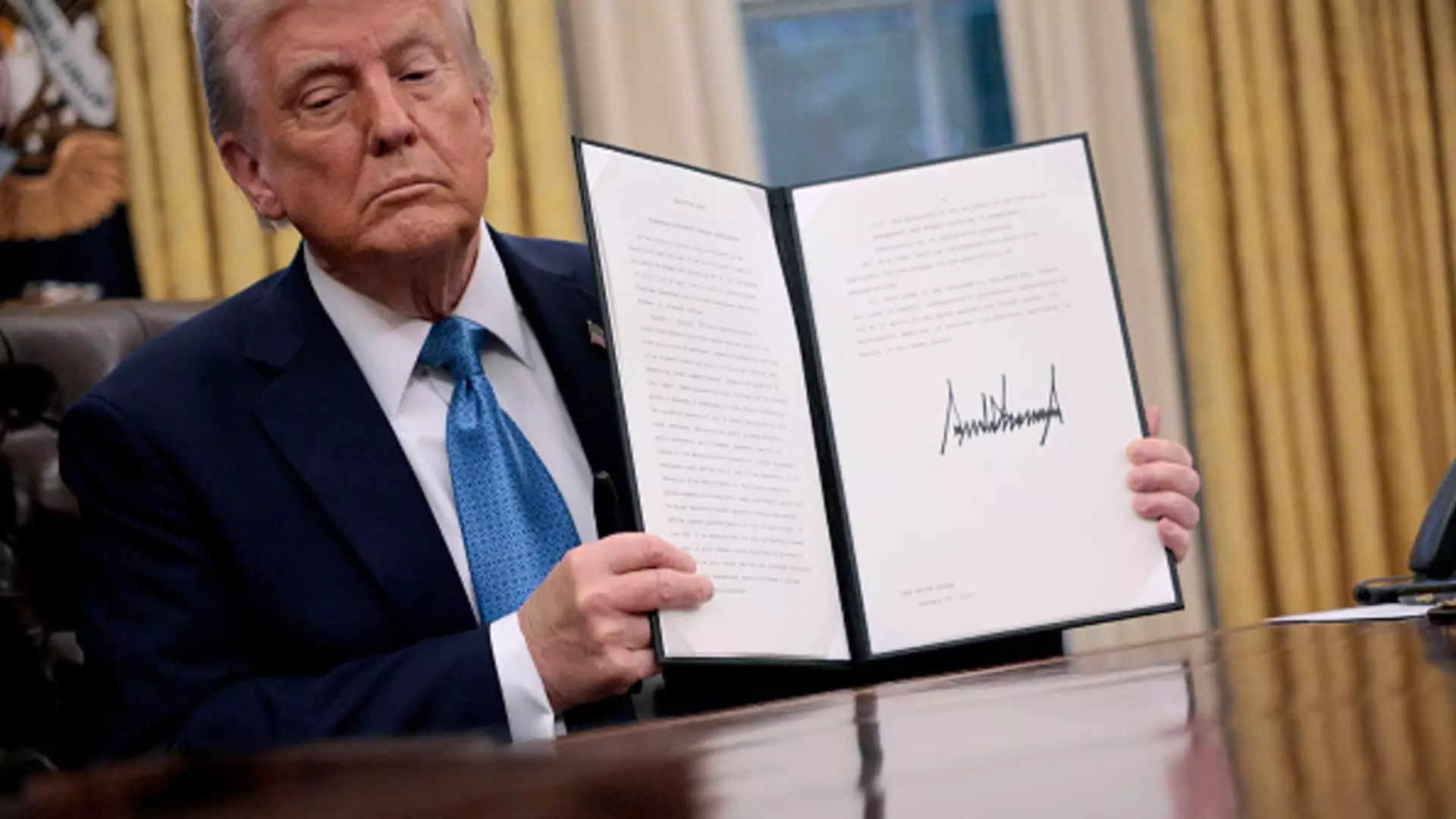The recent introduction of tariffs by the Trump administration has sparked significant upheaval in the U.S. stock market, touching off concerns about potential repercussions for various industries and the overall economy. In an era where the interconnectedness of global trade is a defining characteristic of commerce, the imposition of a 25% tariff on goods from Mexico and Canada, alongside a 10% tariff on imports from China, has raised alarms among both investors and business leaders. This article explores the ramifications of these tariffs across key sectors and provides insight into the potentially far-reaching consequences for stock performance and supply chains.
The announcement came as a surprise, prompting immediate reactions from corporations and investors alike. Industries with extensive international supply chains, particularly automotive, retail, and manufacturing, have been particularly vulnerable. The swift sell-off in stocks associated with these sectors serves as an indicator of market anxiety regarding the longevity of these tariffs. For instance, firms such as General Motors and Ford are now facing pressures that could force them to reconsider their manufacturing strategies—potentially shifting production from facilities abroad to the U.S. These decisions come at a time when businesses are already grappling with heightened costs and modified consumer behavior.
In economics, one of the classic responses to tariffs is retaliation. Canada has issued threats of its own tariffs, while Mexico has considered countermeasures that could include levies on a variety of U.S. imports. Such retaliatory actions could exacerbate the situation, leading to a full-blown trade war that can significantly stifle economic growth for all parties involved. The European Union might soon find itself pulled into the fray, as Trump’s administration has vocalized a willingness to extend tariffs to European goods, presenting yet another layer of complexity to an already intricate trade landscape.
The automotive sector illustrates the intricate web of dependencies that characterize modern manufacturing. Major players like Stellantis may soon face disruptions not only to their supply chains but also to their ability to produce and deliver vehicles at competitive prices. Similarly, companies outside the automotive domain, such as Constellation Brands—a significant importer of Mexican alcohol—are feeling the pinch as costs escalate. The outlined retaliatory measures from Canada, which threaten the sale of American alcohol within its country, spell significant revenue losses for U.S. firms operating in or exporting to Canada.
Retailers that rely heavily on imports from China, such as Nike and Lululemon, are also on the brink of a crisis. Increased tariffs can lead to heightened retail prices, deterring consumers and squeezing profit margins at a time when competition in the retail sector is already fierce. Discount retailers, including Dollar General, will disproportionately feel the impact given that a substantial portion of their inventory is sourced from Chinese manufacturers.
The implications of tariffs extend beyond the immediate stakeholders to encompass transportation and logistics sectors. Companies like Union Pacific and Norfolk Southern may experience declining revenues due to slowdowns in the flow of goods owing to increased transportation costs linked to tariffs. As goods become more expensive to transport, this could inhibit the ability of businesses to keep prices competitive, thereby potentially depressing sales further.
In the realm of e-commerce, platforms such as Temu and Alibaba’s AliExpress could face existential threats to their business models. The reduction or elimination of the “de minimis” provision—which enabled low-value shipments to enter the U.S. duty-free—imposes a new level of scrutiny and cost to their operations, limiting their competitive edge in the low-cost goods market. This change could drive consumers back to conventional stores, disrupting the current trend toward online shopping.
As the ramifications of these tariffs unfold, the tangible impacts on markets and industries remain to be seen. Stakeholders must now navigate the uncertain waters of an evolving trade landscape marked by shifting regulations, potential retaliatory measures, and changing consumer behaviors. The current situation serves as an important reminder of the interconnectedness of global trade and the delicate balance that policymakers must maintain to foster economic stability. Ultimately, the challenge will be to weather the storm while positioning for a more favorable trade environment in the future.

